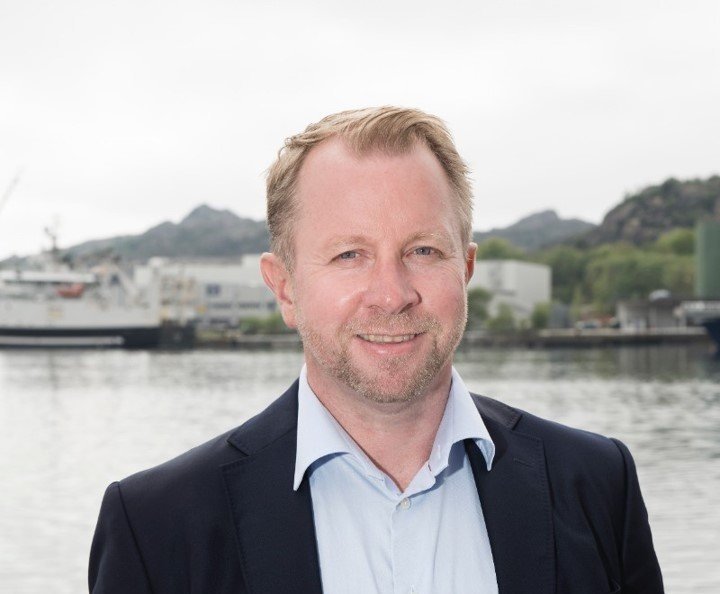Cluster Catch-Up: TrønderEnergi
“Together we will create the most developed hydrogen shoreline in the world”- Magnus Fure Runnerstrøm, TrønderEnergi
In the last Cluster Catch-up, we had a chat with HAV Group about commercializing their hydrogen solutions. Now it is TrønderEnergi’s turn.
TrønderEnergi produces environmentally friendly energy and distributes it to the Trøndelag region in Norway. Construction of the Hydrogen Hub at Hitra is one of their primary focuses right now. In 2025 the hub will start supplying their customers with compressed green hydrogen. We reached out to Magnus Fure Runnerstrøm in TrønderEnergi for a chat.
Magnus Fure Runnerstrøm, Business Developer and Disciplinary Lead Sustainability at TrønderEnergi
What is TrønderEnergi’s primary focus right now?
It’s a very exciting time for us at TrønderEnergi as we are, together with Hitec Vision, establishing a new renewables company called Aneo this autumn. This move will greatly increase our ability to act upon our green ambitions for the future, in Norway and beyond, Magnus Fure Runnerstrøm explains.
TrønderEnergi and Statkraft have been awarded 113 million in support for a hydrogen hub at Hitra. A facility for hydrogen production and bunkering will be established at Jøsnøya in Hitra municipality.
However, regarding hydrogen specifically our main focus is the construction of the Hydrogen Hub at Hitra – Hydrogenknutepunkt Midt-Norge - and investigating further opportunities in the hydrogen market. In June, we and our project partner Statkraft received the excellent news from Enova that we will receive the necessary funding to construct a hydrogen production plant with refuelling capacities. Together with the other Enova-funded hubs and hydrogen vessels this will create the most developed hydrogen shoreline in the world.
Located at Hitra in Trøndelag, together with Frøya the salmon capital of Norway, the hub will supply compressed green hydrogen (CH2) to primarily maritime consumers by Q3 in 2025. The local industrial activities combined with being part of the main shipping lane will ensure that the plant is ideally located for further growth in hydrogen consumption and thereby further mitigation of carbon emissions. This consumption potential opens the doors for further energy carriers like ammonia and LOHC in the future. In total, these characteristics enables large-scale hydrogen production, reducing the cost for all, in a location that suits existing and coming routes and activities.
What are the biggest challenges and opportunities for TrønderEnergi in the future?
Developing a large-scale hydrogen economy is groundbreaking work, technically, judicially, and business-wise. As a hydrogen producer we are obviously dependent upon a sufficient market. Our biggest challenge is therefore to keep motivating potential consumers, and thereby usher in the carbon emission mitigating green hydrogen as soon and as fast as possible. We have no time to lose if we are to reach the goals of the Paris Agreement - and we must reach them.
Fure Runnerstrøm sees big opportunities for TrønderEnergi:
Our biggest opportunity is the other side of that coin. By making hydrogen available for maritime and heavy-duty industry we ensure that important Norwegian employers take the necessary steps into the carbon mitigating decades ahead, and are competitive in challenging sectors. This makes our work an integral part of Norwegian mitigation efforts, and that is the backbone of our philosophy of offering clean, renewable energy.
How can hydrogen be a part of the solution for the future?
Hydrogen can and will play several roles in carbon mitigation in the decades ahead. To take one example, we’re dependent upon having cheap transport solutions. Hydrogen and its derivatives, like Ammonia and LOHC, will ensure that also a low-carbon society can still deliver crucial functions to an affordable price. If we are to solve the crisis we face we must achieve broad motivation for change, and it can’t come at the expense of basic services like affordable transport. The movement of goods and people is intrinsic to the modern society, and clean hydrogen will remove carbon emissions throughout the value chains we all take part in.
What is your primary focus when it comes to sustainability?
We are determined to administer our resources in a way that safeguards all three dimensions of sustainability. Among other things that entails looking beyond carbon emissions, and also ensuring that our actions are compatible with our own and UN’s Sustainable Development Goals, e.g. Life on Land and Sustainable Cities and Communities. More specifically this means that we’re willing to increase financial cost if the environmental and/or social benefits are satisfactory.
We cannot be blind to the other dimensions of sustainability just because we are doing important work to reduce carbon emissions. More specifically this entails evaluating the value chain and taking measures like minimizing area used and transport needed and avoiding using areas with high or vulnerable biodiversity.
Why did you decide on becoming a member of Ocean Hyway Cluster?
We see maritime industries and activities as the main forerunner for a large-scale hydrogen economy. OHC facilitates necessary networking and organisation to ensure that actors from across the value chain move in the same direction. Our membership is an important channel to be up-to-date on the Norwegian hydrogen sector, Fure Runnerstrøm ends.
Curious about a membership in Ocean Hyway Cluster? Have a look here.
Siri Odijk Solbakken
Communications Advisor
+47 977 53 065
siri@hubforocean.no







